segunda-feira, 12 de novembro de 2018
Seminário Científico de Sistemas de Eletrônica de Potência – SCSEP 2018-11 E 12 DEZEMBRO 2018 Instituto de Eletrônica de Potência (INEP)-FLORIANOPOLIS-UFSC
O Instituto de Eletrônica de Potência (INEP) promoverá o terceiro Seminário Científico de Sistemas de Eletrônica de Potência – SCSEP 2018, evento que ocorrerá nos dias 11 e 12 de dezembro de 2018 no Auditório Luiz Antonio Teixeira, localizado no prédio da Engenharia Elétrica da UFSC, Florianópolis e será organizado por comissão local.
O seminário está programado para receber aproximadamente 100 pessoas, entre alunos e professores da instituição e de outras, assim como profissionais da área que atuam nos setores público e privado. O evento tem como objetivo apresentar e divulgar os últimos avanços da área por meio da ação de alunos e pesquisadores do Instituto, incluindo pós-doutorandos, doutorandos, mestrandos, alunos de iniciação científica e tecnológica e em conclusão de curso de graduação. Tais trabalhos estão sendo desenvolvidos no INEP e se encontram em estágio avançado, representando possíveis soluções para a indústria e possibilitando, assim, a interação entre as partes. No evento serão realizadas também palestras e debates com convidados especialistas da área, com a finalidade de discutir as tendências e demandas atuais para a área de Eletrônica de Potência, bem como suas perspectivas futuras.
LINK ORIGINAL
http://scsep.inep.ufsc.br/
quinta-feira, 8 de novembro de 2018
DISEÑO Y FABRICACIÓN DE BANCO DE CARGAS PARA PRUEBAS DE EQUIPOS DE POTENCIA MONOFÁSICOS Y TRIFÁSICOS Autor: D. David Soto Pérez-UNIVERSIDAD CARLOS III DE MADRID ESCUELA POLITÉCNICA SUPERIOR
DISEÑO Y FABRICACIÓN DE BANCO DE CARGAS PARA PRUEBAS DE EQUIPOS DE POTENCIA MONOFÁSICOS Y TRIFÁSICOS
Autor: D. David Soto Pérez Tutor y Director: Dr. D. Antonio Lázaro Blanco Codirector: D. Virgilio Valdivia Guerrero
UNIVERSIDAD CARLOS III DE MADRID ESCUELA POLITÉCNICA SUPERIOR INGENIERIA TÉCNICA INDUSTRIAL: ELECTRÓNICA INDUSTRIAL
PROYECTO FIN DE CARRERA -BACHELOR THESIS
CAPÍTULO 1 INTRODUCCIÓN El presente proyecto surge de la idea de realizar un banco de cargas con el cual poder acometer pruebas de equipos de potencia alterna. El tipo de cargas con las que se ha capacitado al banco son resistivas, capacitivas e inductivas. La principal característica con la que se ha querido dotar al banco ha sido la versatilidad. Para poder capacitar al banco de tal versatilidad, se ha utilizado un amplio rango de valores de cargas. Éstas pueden ser combinadas entre ellas mismas dando lugar a un amplio rango de valores posibles. Si con las cargas de las que dispone el armario no fueran suficientes, se ha proporcionado una conexión externa a la salida del equipo para poder conectar cargas externas combinándolas con las cargas internas. Para poder utilizar el banco en diferentes lugares, como puede ser otras universidades o empresas, se ha diseñado en un armario que dispone de la movilidad suficiente para poder ser trasladado de un modo relativamente fácil. Aunque la versatilidad de uso del armario es muy amplia, se han distribuido las elementos de interface con el usuario de tal modo que su utilización sea lo mas sencilla posible, identificando claramente cada uno de los componentes. Uno de los aspectos con los que se ha tenido un especial cuidado ha sido la seguridad del usuario a la hora de trabajar con el banco de cargas, ya que se va a poder trabajar con el utilizando tensiones y corrientes que pueden ser peligrosas para la salud humana. Este aspecto se ha tenido especialmente en cuenta en el diseño del armario y en la evaluación experimental previa al conexionado del banco a tensión.
LINK
https://e-archivo.uc3m.es/handle/10016/16014
sexta-feira, 2 de novembro de 2018
Impact of EV Charging Station on the Electric Distribution Grid Thesis Supervisor: Morris Brenna Department of Energy Politecnico di Milano Master thesis of: Dwaramakki Gaurav Harinarayanan Manimaran
Impact of EV Charging Station on the Electric Distribution Grid Thesis Supervisor: Morris Brenna Department of Energy Politecnico di Milano
Master thesis of: Dwaramakki Gaurav Harinarayanan Manimaran
POLITECNICO DI MILANO School of Industrial and Information Engineering Master of Science in Electrical Engineering
ABSTRACT
Over the past few years, Electric vehicles have become a very important part of the automotive industry as we try to look for a future less dependent on fossil fuels. A lot of research and development has taken place in this field to improve the existing technology and to develop efficient ones. This continued emphasis on research and development has resulted in great improvements in the technology of Electric vehicles. In this thesis, we discuss about the features of Electric Vehicles, the existing protocols to charge the battery systems, the battery management system (BMS), the different standards used in various parts of the world and about the infrastructure that is needed to charge the Electric Vehicles and about the different modes of charging. In the next part of the thesis, we have focussed on the Electric Vehicle and its relationship with the Electric Distribution Grid. Aspects related to PHEV characteristics, Load growth, PHEV Penetration level are looked into. The essence of this thesis is to learn about the Impact of the EV Charging Station on the Electric Distribution Grid. Research papers regarding the impact study of EV Charging station on the Milan Electric Distribution network is considered and discussed. Finally, we look at the Optimisation of EV charging stations which helps in the overall efficiency of the charging process and lessens its impact on the Electric Distribution Grid. In this study we discuss about various control strategies of battery management, charging and the control of inverters.
1. INTRODUCTION The high energy usage, environmental pollution and rising fossil fuel prices, current dependent on Internal Combustion Engine (ICE) technology must be reduced and alternative fuel which has the potential to solve environmental pollution; global warming and energy sustainability concerns must be explored. Taken consideration that electricity is the most suitable energy for transportation in the next 30 years when considering risk, emissions, availability, maintainability, efficiency and reliability [1]. The invention of automobiles with ICE began in the late 19th century and the automotive industry ever since has seen only incremental changes. ICE remains the prime mover for automobiles with fossil fuel as the main fuel. With the increasing concerns over depletion of natural resources (e.g. oil and gas) and air pollution, governments, automakers and consumers worldwide have been working together to adapt a shift to green transportation. This has spurred intense competition and ongoing revolution in the development of electric vehicles (EVs) and hybrid electric vehicles (HEVs) are an alternative to the internal combustion engine (ICE) vehicles with better efficiency and lower CO2 emissions. Among all EVs and HEVs, electrochemical batteries are core components used for energy storage, similar to the fuel tank in ICE vehicles. Nowadays, EVs represent an interesting solution for the growing dependence from fossil fuels, since they allow a considerable reduction of air pollution. However, the diffusion of EVs is still affected by many issues, which are mainly due to interaction and integration of these types of vehicles with the existing power grid. Moreover, in order to have a wide diffusion on the market of no polluting vehicles, they have to present the characteristics of travel ranges and recharging times comparable to the traditional oil-based fuel vehicles. For these reasons EVs require battery packs characterized by high values of both energy storage capacity and charging rates. From this point of view lithium based batteries represent a very interesting solution, as they are showing a great potential, in recent years, to supply electric vehicles having good performance in terms of acceleration and driving range. Nowadays, new technologies of lithium compounds are available, which permit reaching an specific energy up to 180 Wh/kg and a maximum charging rate of 6 C reducing the charging times up to 10 minutes. Typically, the charging modes at low power are suitable for charging the battery packs during night time of 7-8 hours, ensuring low power requirements for the grid. In fact, recent studies demonstrate that the daily travel range is less than 50 km in 80% of the cases. For this reason such slow recharging would be acceptable for most users ensuring a travel range from 100 to 150 km during the daylight.
LINK FULL THESIS
https://www.politesi.polimi.it/bitstream/10589/120624/1/Thesis_LM.pdf
Three-Phase On-board Charger with Three Modules of Single-stage Interleaved Soft-switching AC-DC Converter Byeongwoo Kim, Hyojun Kim and Sewan Choi Department of Electrical and Information Engineering Seoul National University of Science and Technology Seoul, Korea
Three-Phase On-board Charger with Three Modules of Single-stage Interleaved Soft-switching AC-DC Converter
Byeongwoo Kim, Hyojun Kim and Sewan Choi
Department of Electrical and Information Engineering Seoul National University of Science and Technology Seoul, Korea
Abstract— This paper proposes a new three-phase on-board charger with three modules of single-phase single-stage interleaved soft-switching ac-dc converter. Each module has single-stage structure with reduced component counts. It achieves ZVS turn-on of all switches and ZCS turn-off of all diodes. Eliminating the low frequency component in the battery charging current, the proposed converter is able to charge the battery with dc current. A balancing control algorithm is proposed to limit the excessive current through each module caused by unbalanced three-phase input voltage. A preliminary prototype of the proposed converter has been built and tested to verify the validity of the proposed concept.
Keywords—Three-phase; single-phase module; on-board charger; OBC; EV charger; single-stage; balancing control
I. INTRODUCTION
The on-board battery charger is a key equipment that delivers power from the grid to the propulsion battery in electric vehicles (EVs) and plug-in hybrid electric vehicles (PHEVs)[1]. Nowadays, the on-board battery charger available on the market is mostly plugged into single phase grid, and the power rating is in the range between 3kW and 3.5kW[2]-[3]. They should have high efficiency and high power density to maximize the energy utilization and the distance covered per charge. However, a 3kW battery charger requires a charging time of 5 to 8 hours to fully charge the EV battery. There has been a need for on-board battery chargers with higher power rating in order to reduce charging time. In regard to these concerns, a three-phase on-board battery charger with increased power rating has emerged [4]-[7]. The three phase battery charger composed of a three-phase PFC and the dc-dc converter has reduced component count, but cannot be plugged into single phase grid with full power capability[4]. The automobile industry is demanding on-board chargers to have capability of operating at full power with both single-phase grid and three-phase grid. This can be achieved by connecting three traditional 3kW single-phase modules in parallel for single-phase grid or connecting them in delta or wye for threephase grid.
LINK FULL PAPER
http://pefcl.snut.ac.kr/upload/study02/963a904e850b90ea083bd24125a5e234.pdf
Assinar:
Postagens (Atom)















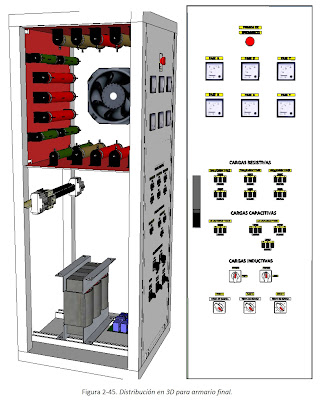



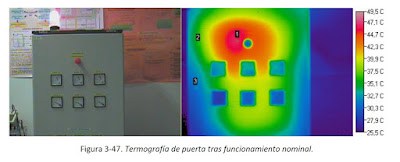
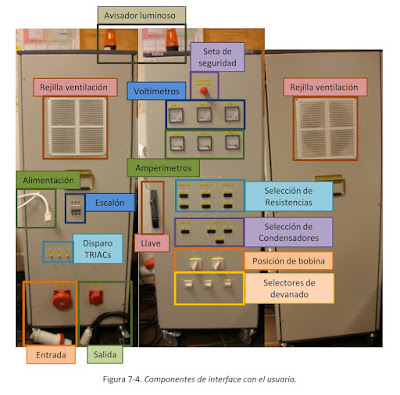


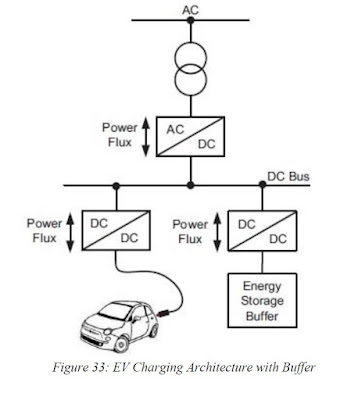




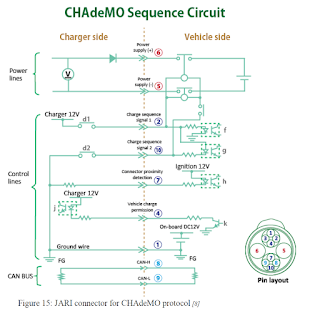


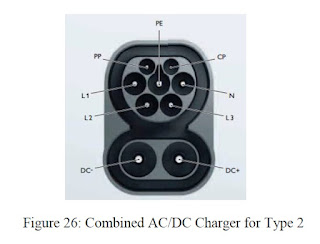

























 JOSIL ARTISTA PLASTICO FORTALEZA CEARA BRASIL AV.HERACLITO GRAÇA 41 TEL(85)32542378
JOSIL ARTISTA PLASTICO FORTALEZA CEARA BRASIL AV.HERACLITO GRAÇA 41 TEL(85)32542378
















